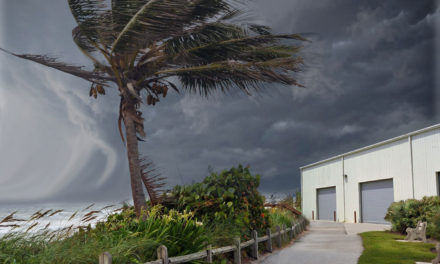HYATTSVILLE, MD – January 18, 2017, Late in 2016, the Gypsum Association (GA) released five revised technical documents. GA-220-2016 Gypsum Board Winter Related Installation Recommendations; GA-223-2016 Gypsum Panel Products, Types, Uses, and Standards; GA-226-2016 Application of Gypsum Board to Form Curved Surface; GA-234-2016 Control Joints for Fire Resistance Rated Systems, and GA-338-2016 Guidelines for Prevention of Mold Growth on Gypsum Board have been updated to reflect current best practices. As a service to the design and construction community, these documents, and more than thirty additional technical documents, are available for free download through the GA Bookstore.
Of particular interest to the construction community, especially during this time of year, is GA-220-2016 Gypsum Board Winter Related Installation Recommendations. Unless precautions are taken, cold and damp weather can contribute to a variety problems during and after installation and finishing of wallboard. Maintaining a room temperature of at least 50°F (10°C) for 48 hours before, during, and after finishing, is just one of 13 recommendations that will reduce the possibility of joint compound bond failing, beading, nail popping and other problems that can result in call backs after project completion.
Because they specify the use of control joints in wall and ceiling systems, architects and designers will want to review GA-234-2016 Control Joints for Fire Resistance Rated Systems. Control joints assist in relieving stresses in assemblies that can result in gypsum board cracks and ridging. GA-234- 2016 outlines the minimum requirements for the installation of control joints. The appropriate specification of control joints is particularly important when a specific fire-resistance rating is dictated by building code.
GA Director of Technical Services Michael Schmeida, MSc, LEED AP says, “Regular review and revision of GA documents is a key component of the Association’s technical services mandate and the GA’s Building Code and Technical Committee (BCTC) has made a three-to five-year revision cycle for all documents a high priority.”
“The Gypsum Association is fortunate to have technical expertise both in-house and among our member companies. Member volunteers devote significant time to service on the BCTC,” notes Executive Director Stephen H. Meima, APR, LEED Green Assoc. “As a result, the GA is confident that our documents represent the best impartial technical advice and information the gypsum industry has to offer.”
In addition to free technical downloads provided through the GA Bookstore, a partnership with BNi Building News, the technical services department has significantly expanded the FAQs available on gypsum.org. “We are committed to further developing our website as a technical hub for the gypsum industry,” Schmeida says. “Nonetheless, we are equally determined to provide technical advice via phone during business hours. After more than 80 years representing the gypsum industry, we understand that, at times, guiding a member of the public though a system or a code requirement over the phone is invaluable. We won’t abandon this hands-on approach even as we expand our electronic offerings.”




